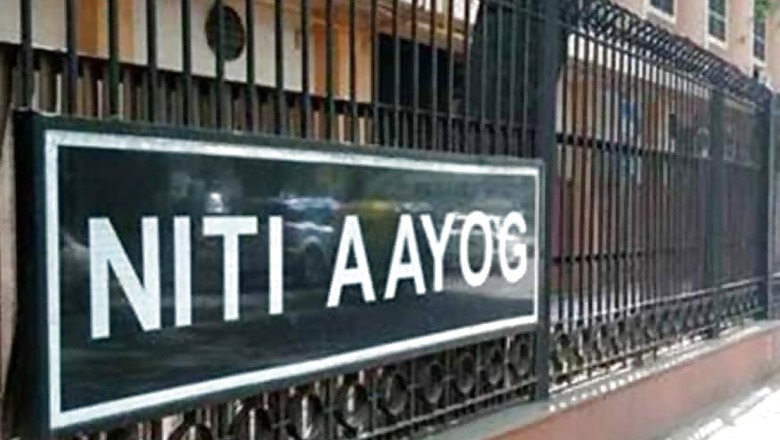
views
New Delhi: The School Education Quality Index released by the Niti Aayog gives a dismal picture of digital learning in classrooms across the country's schools. Despite the push, the percentage of schools having Computer-Aided Learning (CAL) at elementary level for the year 2016-17 shows that only four States and UTs employed CAL in more than 50 percent of their schools at the elementary level.
The report highlights that among them, Chandigarh and Lakshadweep recorded the highest percentages of 76.7 and 75.6 percent respectively. In contrast, Bihar, Tripura, Jharkhand, Meghalaya, Jammu & Kashmir, Chhattisgarh, Andhra Pradesh and Madhya Pradesh had CAL in fewer than five percent of their elementary schools.
SEQI had indicators categorized under two heads – “Outcomes” covering “Learning outcomes” “Access outcomes”; “Infrastructure and facilities for outcomes”; “Equity outcomes” and second category being “Governance processes aiding outcomes.”
The Ministry of Human Resource Development developed and operationalized a CAL program under the Sarva Shiksha Abhiyan (SSA) scheme, with the objective of integrating computers into classrooms as a learning tool. In 2019 February the then HRD minister Prakash Javadekar launched Operation Digital Board to leverage technology in order to boost quality education in the country intended to make the learning as well as the teaching process interactive. Javadekar disclosed that the digital board will be introduced all over the country in government and government aided schools from class 9 th onwards as well as in higher education institutions. The process will begin from the coming session of 2019 itself, the Minister explained.
NITI Aayog developed School Education Quality Index (SEQI) to evaluate the performance of states and union territories (UTs) in the school education sector and aims to bring an ‘outcomes’ focus to education policy by providing States and UTs with a platform to identify their strengths and weaknesses and undertake requisite course corrections or policy interventions.
Also the percentage of secondary schools with Computer Lab Facility how that only 10 states and UTs have been able to provide computer laboratories in more than 50.0 percent of their secondary schools. Among them, Lakshadweep and Dadra and Nagar Haveli have reported the highest percentage of schools with computer lab facilities; 84.6 and 81.0 percent respectively.
As per the report unveiled on Monday, between 2015-16 and 2016-17, the percentage of schools with computer laboratories reduced by more than 10.0 percentage points in Sikkim, Andhra Pradesh, Nagaland, Jharkhand, Arunachal Pradesh, Goa and Meghalaya.
He further said that ODB aims at converting a class room into a digital class room and in addition to availability of e-resources at any time and at any place to students, it will also help in provisioning of personalised adaptive learning as well as Intelligent Tutoring by exploiting emerging technologies like Machine Learning, Artificial Intelligence & Data Analytics. An expert committee has worked out optimum configuration of the Digital Class Rooms under ODB.
This is the first time that the government think tank has come up with the incremental report on education. It was in collaboration with Ministry of Human Resource and Development (MHRD), the World Bank and sector experts, the index consists of 30 critical indicators that assess the delivery of quality education.

















Comments
0 comment